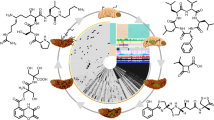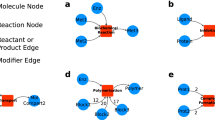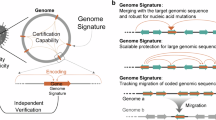Abstract
Standard graphical representations have played a crucial role in science and engineering throughout the last century. Without electrical symbolism, it is very likely that our industrial society would not have evolved at the same pace. Similarly, specialised notations such as the Feynmann notation or the process flow diagrams did a lot for the adoption of concepts in their own fields. With the advent of Systems Biology, and more recently of Synthetic Biology, the need for precise and unambiguous descriptions of biochemical interactions has become more pressing. While some ideas have been advanced over the last decade, with a few detailed proposals, no actual community standard has emerged. The Systems Biology Graphical Notation (SBGN) is a graphical representation crafted over several years by a community of biochemists, modellers and computer scientists. Three orthogonal and complementary languages have been created, the Process Descriptions, the Entity Relationships and the Activity Flows. Using these three idioms a scientist can represent any network of biochemical interactions, which can then be interpreted in an unambiguous way. The set of symbols used is limited, and the grammar quite simple, to allow its usage in textbooks and its teaching directly in high schools. The current document presents version 1.2 of the first level of the SBGN Entity Relationship language. Shared by the communities of biochemists, genomicians, theoreticians and computational biologists, SBGN languages will foster efficient storage, exchange and reuse of information on signaling pathways, metabolic networks and gene regulatory maps.
Similar content being viewed by others
Article PDF
Author information
Authors and Affiliations
Corresponding author
Rights and permissions
About this article
Cite this article
Le Novere, N., Demir, E., Mi, H. et al. Systems Biology Graphical Notation: Entity Relationship language Level 1 (Version 1.2). Nat Prec (2011). https://doi.org/10.1038/npre.2011.5902.1
Received:
Accepted:
Published:
DOI: https://doi.org/10.1038/npre.2011.5902.1



